If you have signs of coronary artery disease, the HeartFlow® Analysis can help provide answers.

CAD develops when the coronary arteries become narrowed or blocked and cannot deliver enough oxygen-rich blood to the heart. This is usually caused by atherosclerosis, the buildup of plaque in the arteries that supply blood flow to the heart. Atherosclerosis can cause chest pains or other symptoms and increase the risk of heart attack.
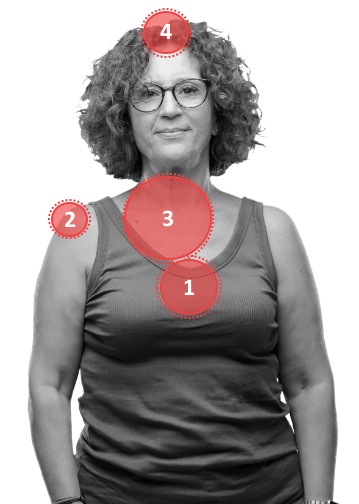
The symptoms of CAD may vary in frequency and in how they present between individuals. Symptoms can happen separately or simultaneously and not all symptoms may be present. The following symptoms are the most common:
Chest pain or uncomfortable pressure
Angina is the medical term for pain, pressure or tightness you may feel in the middle or left side of your chest. Sometimes, it may feel like indigestion or heartburn. Symptoms typically last a few minutes and are relieved by rest or medication. It can accompany physical or emotional stress and may be an indication of CAD.
Pain or discomfort in one or both arms
In addition to chest pain or pressure, you may feel pain in your arms, back, shoulder, neck or jaw. In women, pain in these areas is often short-lived and sharp.
Shortness of breath
If you experience difficulty breathing or unusual fatigue with exertion, that may also mean your heart is not receiving enough blood through the coronary arteries.
Lightheadedness, nausea or a cold sweat
Breaking out in a cold sweat for no apparent reason can be a symptom of CAD. Excessive sweating may be accompanied by dizziness, light-headedness, extreme weakness or nausea.
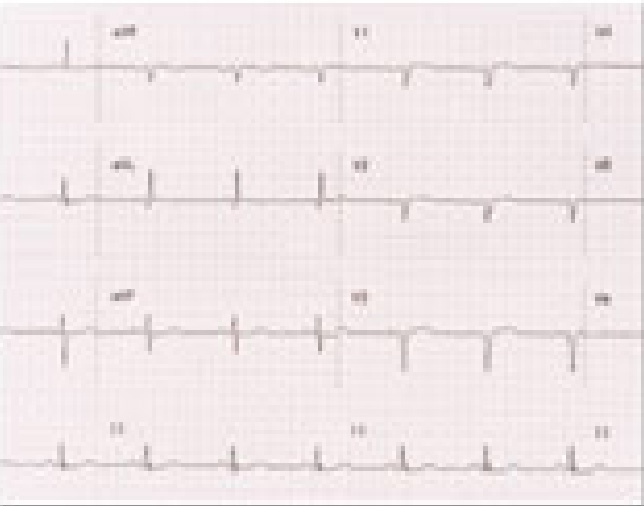 Exercise Stress Test
Exercise Stress Test
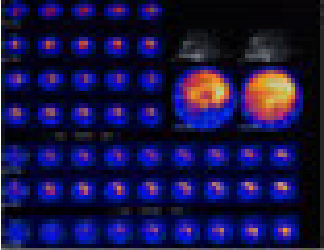 SPECT Stress Test
SPECT Stress Test
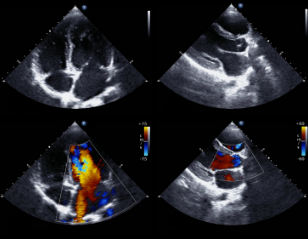 Stress Echocardiogram
Stress Echocardiogram
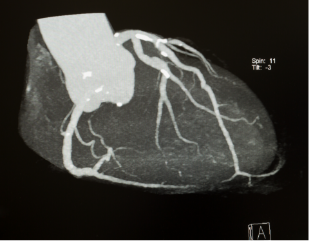 Computed Tomography (CT) Scan
Computed Tomography (CT) Scan
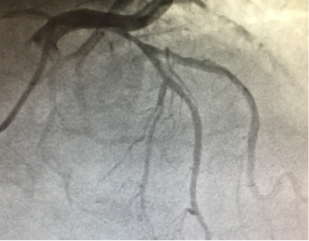 Invasive Coronary Angiogram (ICA)
Invasive Coronary Angiogram (ICA)
Now there is a non-invasive way of diagnosing CAD with more accuracy: the HeartFlow Analysis.7 This cardiac test provides a personalized, color-coded 3D model of your coronary arteries showing how the blockages are impacting blood. The HeartFlow Analysis is the first and only non-invasive test which enables your physician to understand the impact that narrowings and blockages have on blood flow to your heart – information that otherwise would only be available with a riskier, invasive procedure.
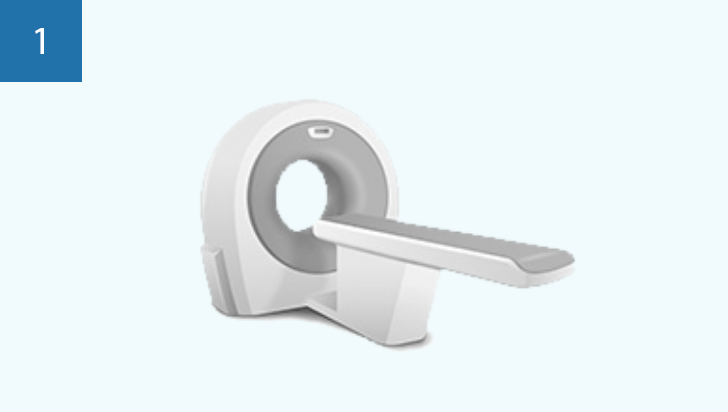
Your doctor will order a standard CT scan of your heart to look for CAD. If the scan shows narrowings in your coronary arteries, your doctor may order a HeartFlow Analysis.
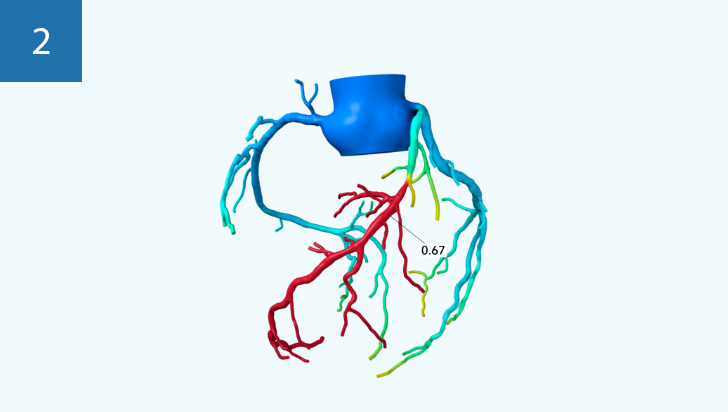
Your doctor receives your HeartFlow Analysis – a personalized, color-coded 3D model of your coronary arteries showing how the blockages are impacting blood flow. This gives your doctor the detailed information needed to better understand the severity of disease.


“After being with my wife during her experience, I knew that I needed to take my own issues seriously.”

“I was very lucky that I had chest pain and was able to get a HeartFlow Analysis in a way. For me, it was a wakeup call.”

“There’s no doubt in my mind, that the HeartFlow Analysis saved my life. I feel like I’m 30 years old again.”

“Dr. Nguyen said how lucky I was. Had they not decided to get the HeartFlow Analysis, every other test clearly showed there was no problem at all. He told me it saved my life.”
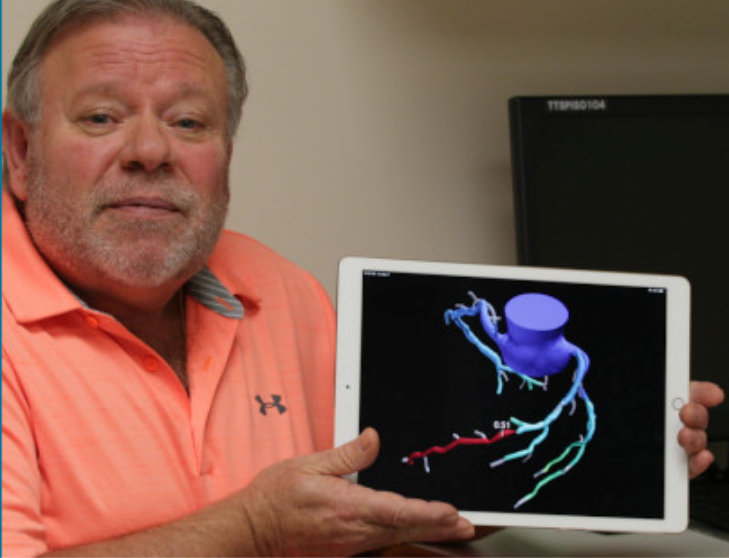
“It was able to literally see the problem that I was having that was remaining undiagnosed for almost two years. It actually shows the blockage in my heart.”

“I thought I was doing all the things that made sense to help manage the possibility that I might have coronary artery disease.”

“If Randy hadn’t had this test, he would have been one of those guys you read about in the newspaper.” said Betsy Rochman.

“I was very surprised when I saw the HeartFlow Analysis showing evidence of triple vessel coronary artery disease for somebody that the night before had been jogging six miles in his neighborhood,” said Dr. Plana.
Speak to our HeartFlow representative or request a digital information kit to share with your doctor.
The HeartFlow Analysis is a personalized cardiac test indicated for use in clinically stable symptomatic patients with coronary artery disease. The information provided by the HeartFlow Analysis is intended to be used in conjunction with the patient’s clinical history, symptoms and other diagnostic tests, as well as the clinician’s professional judgment. Patient symptoms must be documented in the patient’s medical record. While no diagnostic test is perfect, the HeartFlow Analysis has demonstrated higher diagnostic performance compared to other non-invasive cardiac tests.7 If you are a patient and suspect this test may be right for you, please speak with your doctor.




The information provided by the HeartFlow Analysis is intended to be used in conjunction with the patient’s clinical history, symptoms, and other diagnostic tests, as well as the clinician’s professional judgement. The HeartFlow Analysis may not be appropriate for all patients. See indications for use for more information. The HeartFlow Analysis, featuring the FFRCT Analysis, RoadMapTM Analysis, Plaque Analysis, and HeartFlow Planner, has received FDA Clearance in the United States of America. The FFRCT Analysis and HeartFlow Planner are CE Marked in Europe and the United Kingdom and approved in Japan and Canada. The HeartFlow Analysis, featuring FFRCT Analysis, RoadMapTM Analysis, Plaque Analysis, and HeartFlow Planner, is commercially available in the United States. The FFRCT Analysis and HeartFlow Planner are commercially available in the United Kingdom. The FFRCT Analysis is also commercially available in Europe, Japan, and Canada.
© 2024 HeartFlow, Inc. | HeartFlow and the HeartFlow logo are registered trademarks of HeartFlow, Inc. Additionally, RoadMap is claimed as a trademark of HeartFlow, Inc. www.heartflow.com | 331 E Evelyn Ave, Mountain View, CA 94041
*Required fields
If you would like to request to have the HeartFlow Analysis available at a location near you, please submit your information below with details of the institution. We will share this information with the institution, but it will not guarantee HeartFlow will become available.
*Required fields
オンライン提出フォームから研究助成金を申請してください。
HeartFlow FFRCT 分析は、有資格の臨床医による臨床的に安定した症状のある冠状動脈疾患患者への使用を目的とした個別化された心臓検査です。 HeartFlow Analysis によって提供される情報は、資格のある臨床医が患者の病歴、症状、その他の診断検査、および臨床医の専門的判断と組み合わせて使用することを目的としています。
ハートフロー分析に関する追加の適応情報については、次のサイトをご覧ください。www.heartflow.com/indications.
さらに質問がある場合は、このメッセージを閉じてフォームに記入するか、サポート チームにお電話ください。: 877.478.3569.
The HeartFlow FFRCT Analysis is a personalized cardiac test indicated for use in clinically stable symptomatic patients with coronary artery disease by qualified clinicians. The information provided by the HeartFlow Analysis is intended to be used by qualified clinicians in conjunction with the patient’s history, symptoms, and other diagnostic tests, as well as the clinician’s professional judgement.
For additional indication information about the HeartFlow Analysis, please visit www.heartflow.com/indications.
If you have additional questions, close out of this message to complete our form or call our support team: 877.478.3569.Please use our online submission form on the Clinical Research Page to apply for research grants.
Thank you for your interest!

Executive Vice President and Chief Medical Officer
Campbell brings a wealth of experience to HeartFlow, where he serves as the Chief Medical Officer. Prior to joining HeartFlow, he was the Chief Scientific Officer and Global Head of Research and Development at Cordis Corporation, Johnson & Johnson, where he was responsible for leading investments and research in cardiovascular devices. Prior to Cordis, he was Associate Professor of Medicine at Harvard Medical School and the Harvard-M.I.T. Division of Health Sciences and Technology, and Director of the Cardiac Catheterization and Experimental Cardiovascular Interventional Laboratories at Brigham and Women’s Hospital. He served as Principal Investigator for numerous interventional cardiology device, diagnostic, and pharmacology trials, is the author of numerous journal articles, chapters, and books in the area of coronary artery and other cardiovascular diseases, and was the recipient of research grant awards from the NIH and AHA.
He received his A.B. from Harvard College and his M.D. from Harvard Medical School.